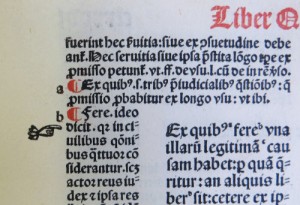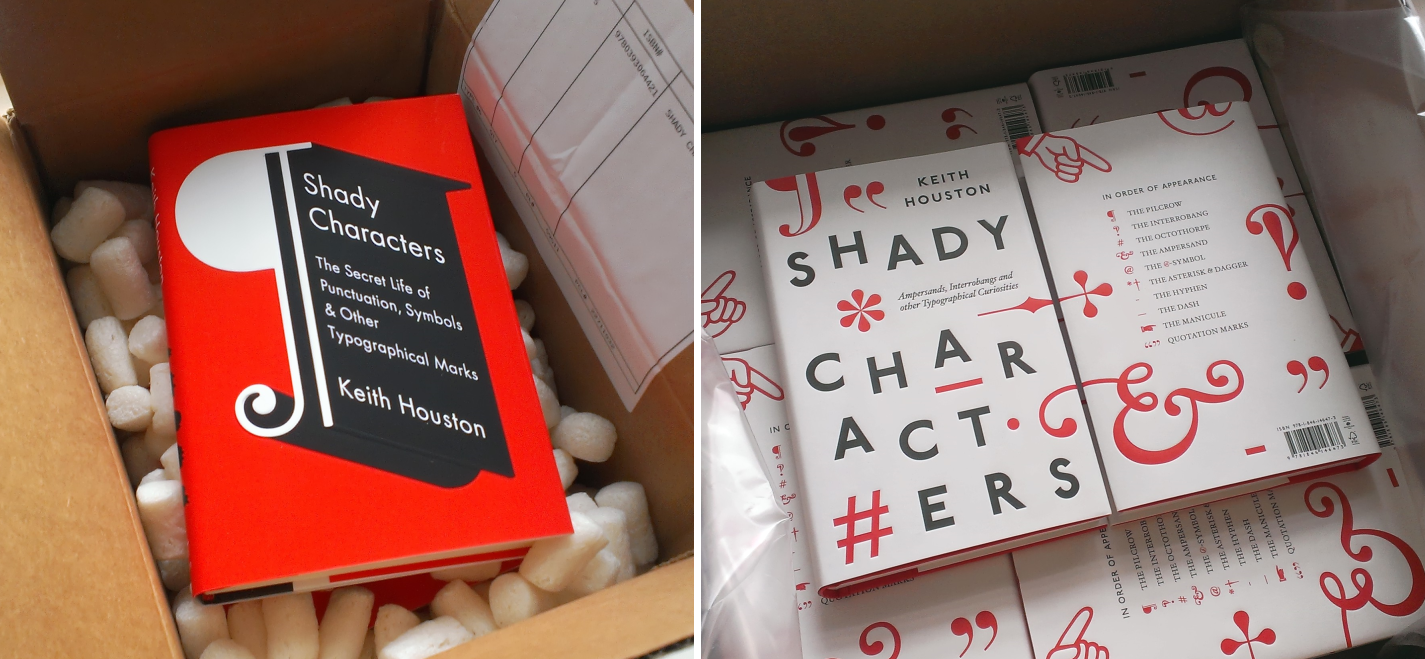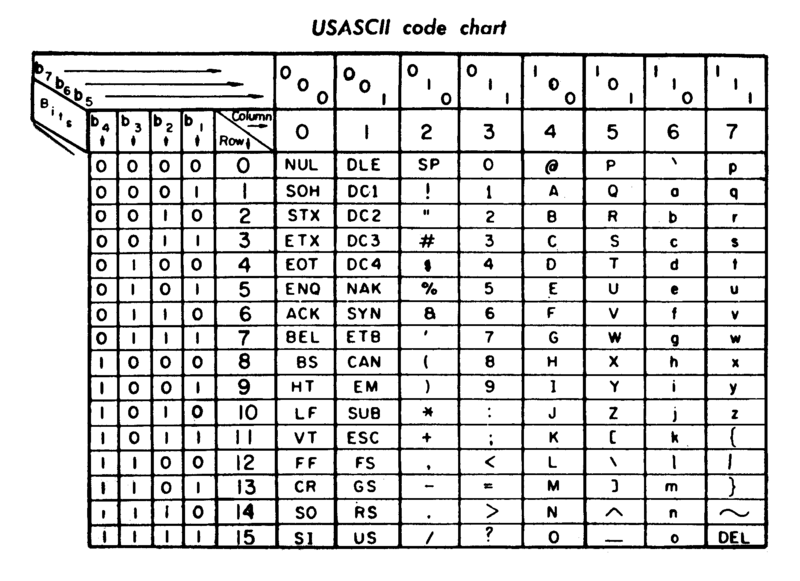I wrote a guest post for The New Yorker’s Page-Turner blog. Read it here!
Miscellany № 37: welcome to :Düsseldorf

I must apologise for the radio silence this past weekend; my wife and I were visiting Düsseldorf in Germany for a few days of archaeological sightseeing, museum going, and tasting of regional beers. One thing caught my eye as soon as we arrived, as you can see above: the city’s new logo, designed by advertising agency BBDO, could be seen from the airport to the Altstadt. The Local reports that BBDO head Frank Loetze said: “We wanted an over-arching symbol which exudes the feeling of living in the city — the grinning D is concise and appealing. And we decided on red and white as they are the colours of the city.”1
Though it isn’t explicitly mentioned, I feel certain that BBDO must have been inspired by the umlaut over Düsseldorf’s ‘u’. Certainly, at a time when some German businesses are abandoning their umlauts for the sake of clarity in international business dealings,2 Düsseldorf’s new logo positively celebrates it, and the sans-serif Ü in :DÜSSELDORF is as cheery as the :D with which it starts.
In other news, I somehow managed to miss Tom Humberstone’s punctuation support group comic strip in the New Statesman when it was first published back in July. Very remiss of me, but here it is nevertheless. Better late than never!
Nick Sherman is on the hunt for a monospaced typeface that contains a manicule, or “monocule”, as he has it. Can you help?

Also on the subject of the manicule (and arriving late to the party yet again) I recently came across an excellent post on the subject of the manicule from Cardiff University Library’s Special Collections and Archives. In it Ken Gibb presents a bevy of manicules to ogle, including the lovely printed example shown here. Take a look!
That’s all for this week. Thanks for reading!
- 1.
-
“Düsseldorf Mayor Launches ’friendly’ Logo”. The Local.
- 2.
-
“German Firms Ditch Umlauts for Global Trade”. The Local.
Unboxing

Two long-awaited parcels — one from W. W. Norton, the other from Particular Books — arrived this week. With just less than a month to go before publication, I now have some copies of the finished books! They’re both rather amazing.
Above left is Jason Booher’s* cover for W. W. Norton. My shoddy photographic skills don’t really do it justice at all: there’s some very subtle embossing in there that gives the cover design extra depth, and the matte finish is just lovely. I keep wanting to run my hands over it. Also not visible from the photo are the spine, back cover and flaps, all of which carry on the orthographic theme and which look great in their own right.
On the right is Matthew Young’s cover for Particular Books. One pleasant surprise for me was the way in which the front and back covers match up — you don’t have to buy two copies, of course, but they’ll look sharp together if you do! Very nifty. I also love Matthew’s use of what I believe is P22 Johnston Underground, the modernised, licensed version of Edward Johnston’s 1916 London Underground typeface. I’ve always wanted to use that typeface but never quite got it to work the way I imagined it should. Here, though, it is fantastic.
Needless to say, if either of these editions take your fancy then you can pre-order the book today!
- *
- I earlier (and erroneously) said that Judith Abbate designed this cover. Judith is instead responsible for the excellent internal design of the book. My apologies to Jason! On a serious note, I’m afraid to say that Judith is currently undergoing treatment for cancer of the appendix. Go here if you’d like to help defray the quite staggering medical costs that she and her family are facing. ↢
Win a copy of Shady Characters!
Would you like to get your hands on an early copy of Shady Characters? W. W. Norton is giving away fifteen copies of the US edition of the book through Goodreads — where, coincidentally enough, it has earned a solid four-star rating. If you’d like the chance to add your voice to the reviews, head over to Goodreads before the end of today to enter the competition!
Miscellany № 36: the rarity of the shady character
A short but sweet entry today, I’m afraid. Don’t worry, though; with a bit of luck, I should have something rather special for you next week. For now, though, on with the show!
First up is an article on Samuel Arbesman’s Social Dimension blog over at Wired, entitled “The Rarity of the Ampersand: Frequencies of Special Characters”.*

Arbesman is an applied mathematician, and he writes about an experiment carried out by Michael Dickens to determine the relative frequencies of characters in a variety of contexts such as prose, casual writing, and programming. Dickens confined himself to the component characters of the now decidedly old-school ASCII code, but the results are instructive nonetheless. There are some familiar faces at the bottom of the list: &, <, %, @, #, ^, `, and ~ bring up the rear for both punctuation characters only and all symbols combined. Perhaps the tilde, percent sign and caret should be in the running for Shady Characters 2!
Continuing with the theme of character frequency analysis, I recently came across a site called Context of Diacritics, whose creator Ondrej Jób describes it as “an analysis of diacritics made to help type designers with refining the character sets of their fonts.” Ondrej and his collaborators have mined Wikipedia articles written in a variety of different languages to derive a list of frequencies for characters with diacritic marks (ä, ř, đ, and so on) and pairs of letters with diacritics (çõ, ół, and so on). And though CoD is ostensibly a tool to help type designers focus on the most widely used combinations of characters and diacritics in their target languages, it’s a visual and typographic treat even for non-type designers like myself. Take a look! What’s your favourite diacritic/letter pair?
- *
- Arbesman also links to a new article on the Apple command symbol, or ⌘. We’ve talked about this before on Shady Characters, of course, but new material on unusual symbols is always welcome and Mike Wehner’s article “Mac 101: The history of the Command key ‘pretzel’” is still worth a read. ↢